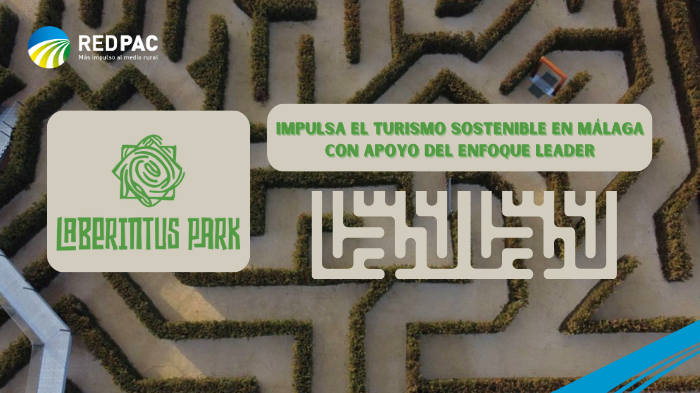
02 de June de 2025
Dinamización rural
It is the largest natural labyrinth in Spain and the first biotechnological one in the world.
- It is the largest natural labyrinth in Spain and the first biotechnological one in the world.
- It has LEADER funding obtained through the Antequera Region Local Action and Development Group
- Its objective is to promote sustainable tourism and ecological awareness, using new technologies and efficiently managing resources.
Many small municipalities currently face the difficult challenge of attracting visitors who will revitalize rural areas while respecting their natural surroundings and residents. In this context, Laberintus Park opened in February 2025 , a natural labyrinth located in Humilladero (Málaga), at a connection point with the provinces of Córdoba and Seville. It has received support from the Antequera Region Local Action and Development Group ( GAL ), which funded it through the LEADER approach .
The park
Laberintus Park , at 7,400 meters, is the largest plant labyrinth in Spain and the only biotech labyrinth in the world. Plants play an important role in the movement of energy and act as "switches" when they interact with light, sound, or human touch.
According to Rafael Mesa, the project's main promoter, the initial idea was to create a space where children could have fun "without having to use screens," but instead using technology. He explains that the park has an innovative and environmentally friendly approach.
Its design was entrusted to Adrian Fisher , one of the world's foremost labyrinth designers, who was inspired by the Alhambra in Granada. The technological design was carried out by the company Bioo .
The park is designed to accommodate visitors of all ages, with different levels of difficulty and group activities.
Local development and sustainability
One of the park's objectives is to diversify inland tourism in Málaga, where tourism initiatives are concentrated in other areas near the sea. It is located between provinces and features a remarkable natural landscape, surrounding the Laguna de Fuente de Piedra .
Mesa comments that the project was initially conceived more in "business terms" than in terms of rural development, but that it has ended up generating "wealth and jobs." It currently employs 16 young people who combine this activity with their studies.
At the same time, it aims to be a benchmark in sustainable tourism and environmental conservation through environmental education and respect for biodiversity. It uses plants to generate sustainable energy and manages its resources efficiently to minimize its carbon footprint.
Financing
The project has received support from the European Agricultural Fund for Rural Development ( EAFRD ), processed through the Antequera Region LAG. It has also been part of the Digital Kit program , co-financed by the Next Generation (EU) funds of the recovery and resilience mechanism.









